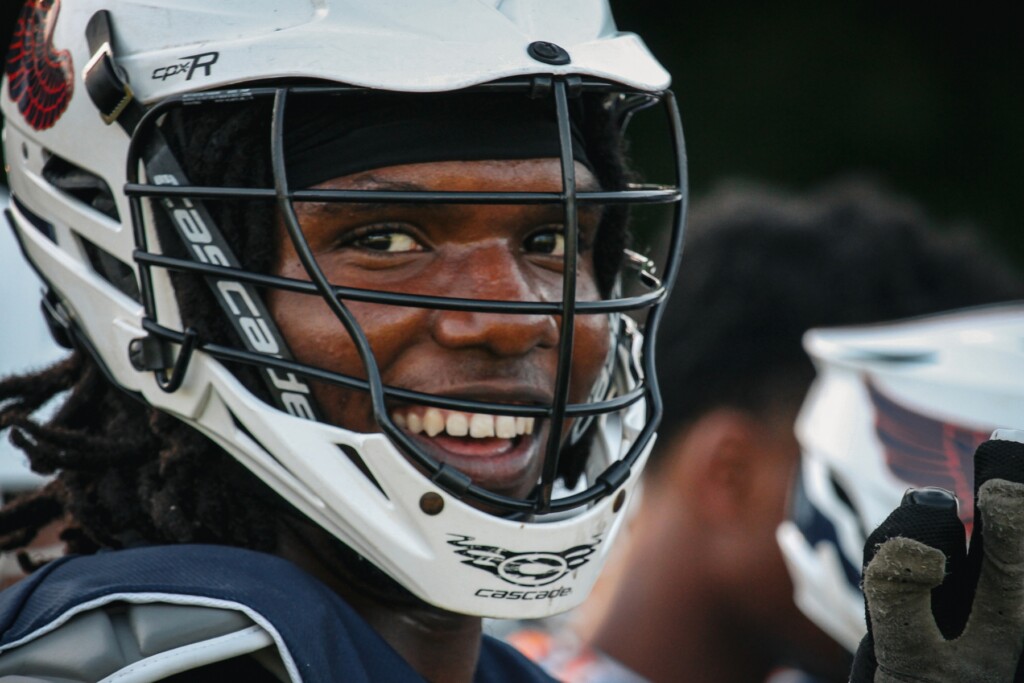Texas football fans might be familiar with the name Miles Johnson. The high school senior starred at wide receiver for South Oak Cliff the last three seasons, helping the school become the first in Dallas ISD history to earn back-to-back state titles. But his first state championship didn’t come on a football field. He won it playing lacrosse.
In spring 2021, Johnson, who’d started playing lacrosse about three years earlier, when his mother forced him into a practice, was called up to the varsity team for Bridge Lacrosse, joining classmates from Barack Obama Male Leadership Academy and others from Oak Cliff and nearby neighborhoods. Facing deep-pocketed private schools and North Texas suburban programs, Johnson says his team coalesced into “a brotherhood.” The season culminated with a state championship win against Fort Worth Trinity Valley.
It was an improbable victory. In fact, it was improbable that Johnson played lacrosse at all. Bridge Lacrosse, a nonprofit, is the Dallas area’s lone high school lacrosse program south of I-30, providing opportunities for children who don’t fit the stereotypical mold of lacrosse athletes.
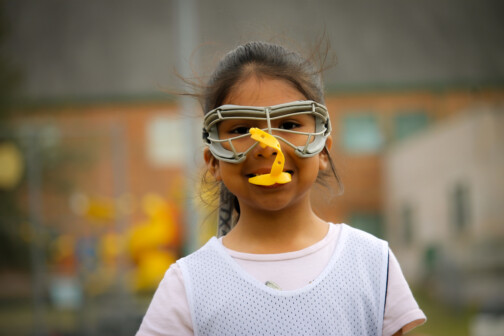
Over the last decade and a half, lacrosse has exploded, with youth participation soaring in the United States from roughly 300,000 in 2008 to 2 million in 2022. But despite the sport’s multicultural history—it was invented centuries ago by indigenous North Americans and famously dominated by Jim Brown in the mid-20th century—lacrosse is largely a White, affluent sport. Some 60 percent of youth lacrosse players come from families that make at least $100,000 per year. At the college level, more than 80 percent of lacrosse athletes are White, compared to 55 percent of all NCAA athletes—and that’s with the share of Black, Hispanic, Asian, and biracial lacrosse athletes doubling since 2012.
North Texas reflects this reality. The programs at Highland Park, Jesuit, Hockaday, and St. Mark’s are among the most established and most successful. Bridge Lacrosse, developed nearly 20 years ago, gave the scene a new look. Some 800 kids—and around 200 core participants—play on teams in age groups ranging from kindergarten to high school JV and varsity. Nearly 50 percent of Bridge participants are Black, and about 25 percent are Hispanic, hailing from Oak Cliff, Pleasant Grove, East Dallas, and southern suburbs such as Red Oak, DeSoto, and Duncanville.
The sport is still hardly mainstream in southern Dallas. When Johnson started playing, lacrosse was a mystery. But like many who take up the sport, he quickly grew to enjoy the techniques and the camaraderie fostered by Bridge Lacrosse, relishing the chance to do something different and be a trailblazer.
“Where I come from,” Johnson says, “this is what made me stand out.”
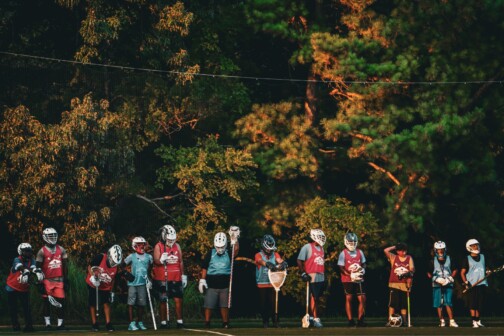
The early days of Bridge Lacrosse, in the mid-2000s, were not easy. The players, boys from St. Philip’s School and girls from Irma Lerma Rangel Young Women’s Leadership School, wore oversized pads and used antiquated sticks—whatever was donated—and barely drew enough participants to field full teams. At one point, a coach for the boys team quit in the middle of a doubleheader.
“We didn’t win any games,” Edie Lycke said.
Lycke founded the program. A fan of lacrosse since living in the Washington, D.C., area long ago, she started a lacrosse team at Hockaday, her daughter’s school. Parents at other schools soon contacted her for advice on starting teams, and she eventually formed Friends of North Texas Lacrosse to support the sport’s growth. But Lycke realized all the teams were in North Dallas, many at expensive private schools. She wanted kids from southern Dallas to have the same opportunities.
Parents were skeptical at first. But the teams at St. Philip’s and Irma Rangel grew—eventually including kids from all over southern Dallas and officially turning into the Bridge program—because kids enjoyed the sport and shared the game with their friends. David Higbee, the executive director of Bridge since 2011, says lacrosse tends to have that impact. The irony of its status as a mostly affluent sport is that people of all sizes and builds can succeed at the sport.
“It rewards technical skill over athleticism in ways that other sports don’t,” Higbee says. “It helps to be muscular and fast, but not as much as in football or something. So it’s actually a really democratic sport.”
The essence of the Bridge program is development. Lacrosse is supposed to help the kids discover more about their own potential, athletically and academically. Some kids have learned as much from how the games are played as where the games are played.
Before joining Bridge Lacrosse as an eighth grader in 2009, Karla Garcia rarely left her neighborhood in Pleasant Grove. On trips to North Dallas and northern suburbs for games, she was shocked by the spacious homes and expensive cars. She wondered why these neighborhoods were more connected and had better-funded schools and public amenities than Pleasant Grove.
Later on in high school, Garcia decided she wanted to pursue a career path where she could challenge the systems creating inequality in the Dallas area. She’s done just that, working on college access programs for the nonprofit The Commit Partnership and serving on the Dallas ISD School Board from 2019 to 2022. She won election by focusing on the need to give students equal opportunities regardless of income, ZIP code, or race. “A lot of those initial observations started through lacrosse,” she says.
Garcia’s experience was an ideal outcome for the program. Several players from Bridge have gone on to play lacrosse in college, but many more hold onto memories made outside of competition: how good it felt to master the technique of shooting a lacrosse ball or the excitement of attending an out-of-state camp. For a time, the program’s coaches even joked about who had the worst record, realizing some had gone years without winning.
Then came 2021. Suddenly Bridge Lacrosse won big.
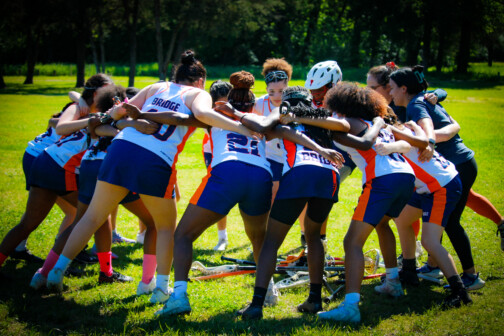
Going into 2021, the boys varsity team had not won in two seasons. The girls team had not won much, either. But when practices began in the spring, Jennifer Lopez, a senior, noticed that the normal light-hearted atmosphere felt infused with passion. The players, she recalled, did not just want to be “a rec team.”
Lopez led by example. She had trained the last year with a Bridge alum, running sprints on the Ronald Kirk Pedestrian bridge over the Trinity River. In the season opener, the girls team beat Grapevine High School. “It was just a surprise,” Lopez says.
The surprises kept coming. Their confidence kept growing. In the state semifinal, they won on a last-second goal against Parish Episcopal. They avenged a bad loss earlier in the season against Bishop Lynch in the championship, hanging on to a lead in the final minutes to win the title. The boys, meanwhile, beat a team from suburban Austin in the semifinal and then closed out the tournament by defeating Fort Worth Trinity Valley.
To Higbee, having both teams win championships felt like “a Disney movie.” “These are teams that have no familiarity with winning, or beating other high school programs,” he says. “And we came out that year with two titles.”
The state championships, won in their respective divisions for the girls in the Texas Girls High School Lacrosse League and the boys in the Texas High School Lacrosse League, didn’t usher in a new dominant era for Bridge Lacrosse. The teams may again compete for a state title this spring, but the program’s emphasis is still participation, development, and cultivating a community around lacrosse.
That community is growing. Garcia is now a board member and, along with Higbee and others, is helping develop a sister Bridge program in Austin. The coaching staff features several alums, including Lopez, who is now a college student and assistant on the girls high school team, sharing lessons like the kind she learned as a lacrosse athlete: that “nothing defines the way I should play a sport other than my skill and the amount of work I can put in.”
Among the players she’s coaching this year is freshman Natalie Ortiz. Ortiz started playing as a third grader but wasn’t crazy about the sport. But then she developed close relationships with her teammates, and her skill level increased. She liked how Bridge arranged tutors for kids and how alumni came back to offer career advice.
Ortiz now plans to play as long as she can and hopes to eventually inspire others like her to do the same. “I want to get better,” she says, “just so one day I can come back and give back, too.”
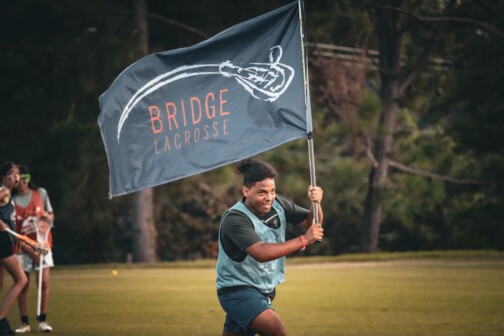
Author



